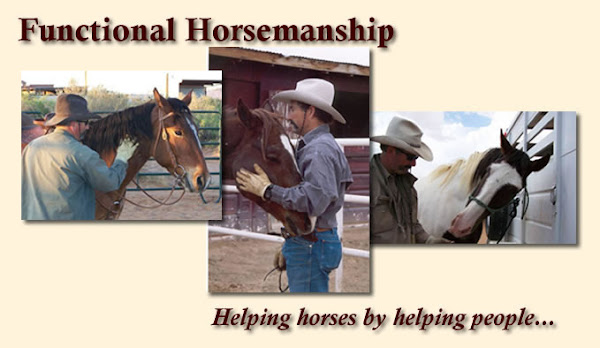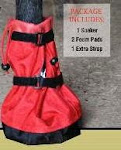Not too long ago, I wrote about Cross Training for horses and how some are taking advantage of the different opportunities to make their horse better. Not necessarily better in a competitive event way, but in the making of an all around horse.
I received a few comments from people who said their horses did better in the arena when they took them on trail rides.
Using competitive events to make a better horse usually requires the rider to push away thoughts of scoring, but also thoughts of what other people think of you and your horse. After all, it's about your horse. And like the saying go's - "there's always tomorrow".
During Arena or Trail Obstacle Challenges, where the horse and rider approach and move through obstacles usually within a time constraint, some rider's will try and push their reluctant horse across a bridge or through a curtain only to meet resistance from the horse. He just isn't ready. To try and push him through the obstacles usually builds anxiety within the horse, justify his initial apprehension, and decreases the chances of him completing that obstacle in the time allowed. And if your horse totally refuses to complete an obstacle and the rider moves on to the next, the horse has just learned he can refuse an obstacle and out wait you. I think the rider's who are thinking long term, will wait on their horse to approach the obstacle in a willing manner. In the video below, I intended on letting my horse set the approach to the yellow slicker. I took a slow jog towards to the slicker, letting my horse look at it and drop his nose on, and as he showed no big issue with it, I asked him forward so I could position up to retrieve the slicker.
More than one rider tried to urge their horse towards the slicker before that horse was ready to accept getting closer and in each case it didn't work out well as the horse was on his own schedule. The difference between approaching the obstacle when the horse is ready and trying to push him to the obstacle because of a judges clock, is often only a few seconds.
When a rider pushes aside the time constraint, and doesn't worry any judging or scoring, time can be taken to use that obstacle to make a better horse. I've seen rider's run out of time then ask the judge if they can continue, and I have seen rider's work on the obstacle after the competition is over. In both instances, thinking of their horse.
The same goes for Ranch Sorting. It has become became pretty popular. While it's a timed event, you can approach your runs as slow as you like, providing your partner thinks the same, and focus on letting your horse get comfortable with what you asking him to do, and build on that. If someone brings a new horse, unexposed to cows, we'll let that horse and rider follow a seasoned horse and move among the cattle getting that horse used to not only the cows but a crowded environment.
Sometimes you'll see an otherwise considerate rider caught up with the competitive aspect, trying to sort as many cows as they can in 90 seconds, regardless on how his horse feels about it. Jerking and pulling on the horse's mouth until the horse is forced to move his feet to keep his balance, or if the horse raises his head and starts backing to get away from the pain of the bit, which slows his forward movement, the rider applying spurs in less than a judicious manner to move the horse forward - in both these cases the horse is getting second billing and the event becomes detrimental to advancing the horse creating some things that have to be undone, which is sometimes harder than teaching something new.
The video below is a Ranch Sorting run by two friends of mine. Aside from just looking like fun, these two work quickly when they need to and take their time when that's necessary. While their horses are old hands at this, this is an example of riding without creating anxiety in your horse and making his worse.



















